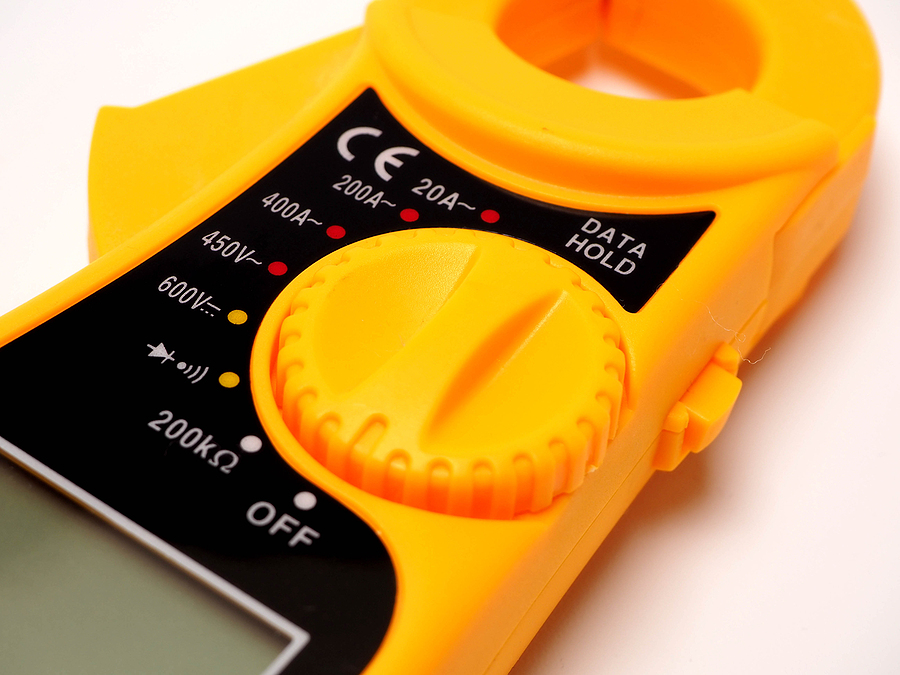Basics of Measuring Home Electrical Usage

Knowing your electrical usage and service rating is crucial if you plan to add new electrical loads.
After you’ve mapped out your home’s wiring circuits, the next step is to figure out how much electricity you use or your electric load. This would take a long time if you had to go around the house and add up the wattages of all the lights and appliances. However, the National Electrical Code (NEC) has set some values based on how much electricity people use daily.
For general-purpose circuits, three watts per square foot of living space and space that could be used in the future are used to figure how much electricity they use (lighting and receptacles). Nominal values for each 20-amp small-appliance circuit are 1,500 watts. These circuits power receptacles in the kitchen, dining room (including the breakfast room), family room, breakfast room, pantry, and laundry circuit.
Then, by applying these values to your home and using the actual nameplate values on significant appliances, you can use a simple formula to figure out how much electricity your home needs.
Consider the example of a house with 1,800 square feet of finished living space and space that can be used for other things down the road. A small-appliance circuit (3,000 watts), a laundry circuit (1,500), a water heater (5,500 watts), a clothes dryer (5,600 watts), a dishwasher (1,500 watts), garbage disposal (600 watts), and a range (15,000 watts) are all on the same circuit (5,000 watts).
Multiply 1,800 square feet by 3 watts per square foot. Lights and other general-purpose circuits use 5,400 watts. When you add the two small-appliance circuits (3,000 watts each), add 1,500 watts for the laundry circuit, and you get 9,900 watts. Next, add the wattage values of all the major appliances, except for the central air conditioner, to get 38,100 watts.
This is the next step. Figure out 40% of the amount over 10,000 watts (0.40 x 28,100 = 11,240 watts). To figure out how much power we have, we add 10,000 to 11,240 and divide by two. This gives us a total of 21,240 watts. Then, add the 5,000 watts of the central air conditioner to get 26,240 watts. This is how many watts you think you will use.
To figure out how much current is needed to run that load, divide 26,240 watts by 240 volts, then multiply that number by 2. In this example, the total comes to 109.33 amps, which means this house should have at least 125 amps of service.
Now, try it out at your own house. Then, look at how many amps your service can handle. In this case, your service can’t handle many new loads.
If your service rating is less than 100 amps, it can’t be used. You can, however, use a different formula that includes the same NEC values that are used for most electrical uses. The general-purpose, small-appliance and laundry circuits are all calculated in the second formula as in the first.
Add 1,500 watts to each 20-amp small-appliance circuit and laundry circuit after you figure out the general-purpose circuit load (3 watts for each square foot of living space x 3). 3,000 + 0.35 = (3,000 – 3,000) + 0.35 = 3,000 + 0.35
Add the nameplate ratings of all major appliances to this value and their prices (space heater, garbage disposal, dishwasher, etc.). There are watts in this figure. People with two-wire service can determine how much current they have by multiplying the wattage by the voltage. For example, you can determine how much current you have by multiplying the wattage by 120 volts. Checking your electricity use and service rating is very important if you plan to add new loads.
After you’ve mapped out your home’s wiring circuits, the next step is to figure out how much electricity you use or your electric load. This would take a long time if you had to go around the house and add up the wattages of all the lights and appliances. However, the National Electrical Code (NEC) has set some values based on how much electricity people use daily.
For general-purpose circuits, three watts per square foot of living space and space that could be used in the future are used to figure out how much electricity they use (lighting and receptacles). Nominal values for each 20-amp small-appliance circuit are 1,500 watts. These circuits power receptacles in the kitchen, dining room (including the breakfast room), family room, breakfast room, pantry, and laundry circuit.
